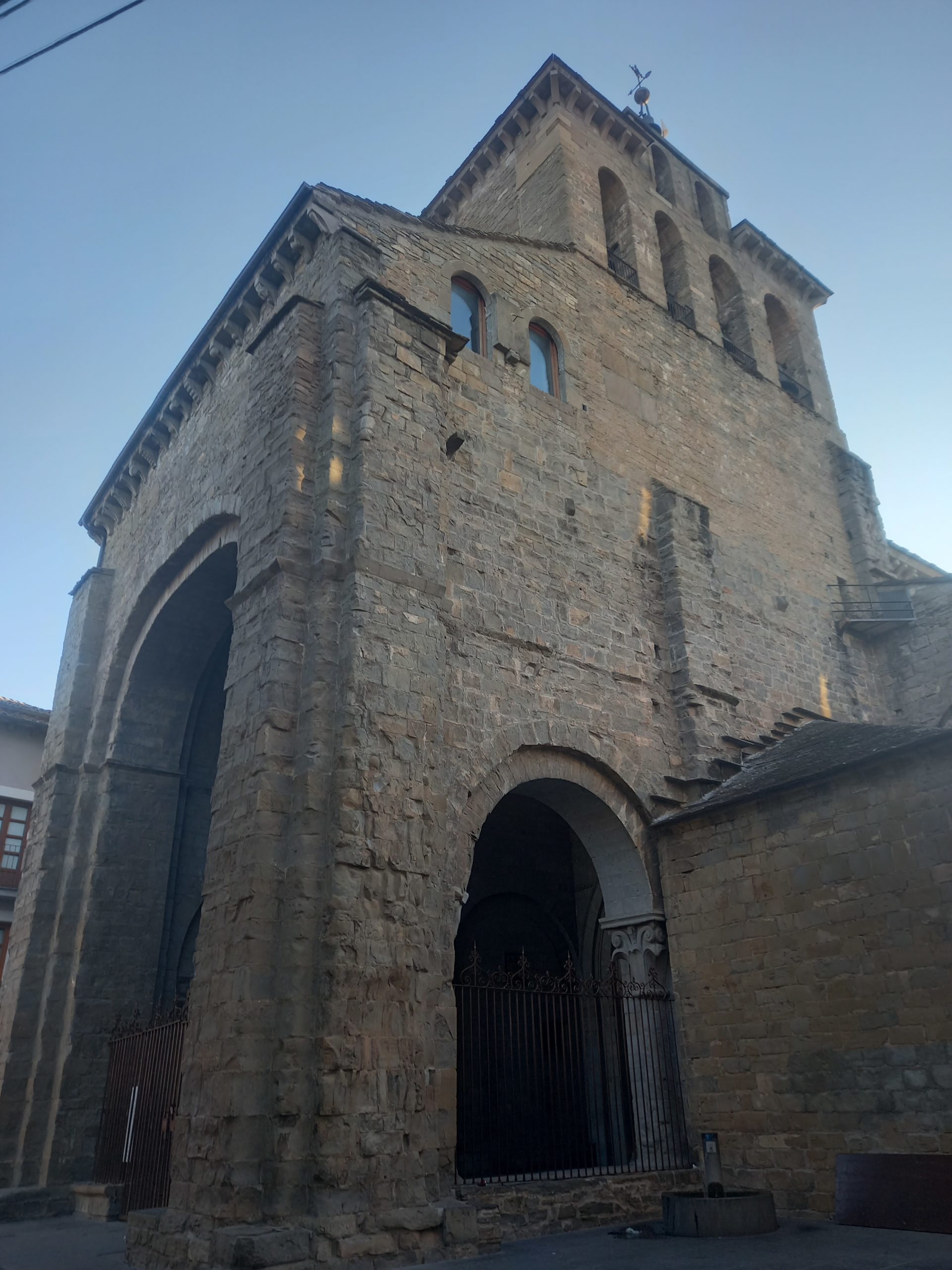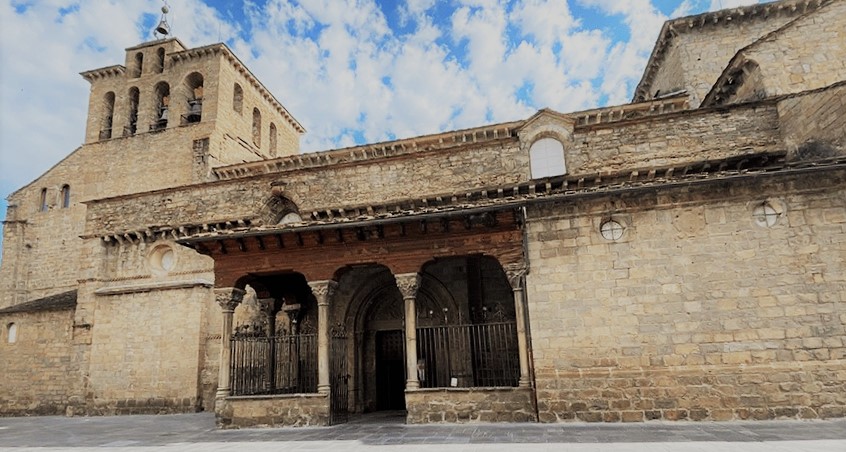And there, in the center of the Pyrenees, in the same Summus Portus as the Romans baptized it, and that since the tenth century was already used by pilgrims from southern Europe, through the Camino de Arles or Via Tolosana, one of the most popular of the medieval pilgrimage, when your senses seem to enervate and your eyes do not know where to look at the landscape that opens up in the valley between steep and rugged mountains, something that you knew was there, but now it is offered to you and you begin to feel that something inside you but maybe you did not know it yet, that free spirit, observant, eager to discover every detail in the lands of the Pyrenees, something that you knew was there, but now it is offered to you and you begin to feel that something that you carry inside you but perhaps you did not know it yet, that free spirit, observant, eager to discover every detail in the lands through which you are going to walk, every bridge, every church, every place where sensitivity was created in stone and in every prayer a suitable place for meditation.

You begin to descend quietly through a stepped stone path, and the first thing you come across are the ruins of the old Hospital of Santa Cristina, a charitable institution created to support the pilgrims who made the Camino, and that already the same Codex Calixtinus (Codex Calixtinus), considered in part as the first travel guide in history, considered the hospital complex as one of the most important: “holy places, temples of God, place of recovery for the blessed pilgrims, rest for the needy, relief for the sick, salvation for the dead and help for the living. One of the three most important hospitals in the world, on a par with those of Jerusalem and Mont-Joux, in the passage of the Great St. Bernard…”
After leaving behind the lying stones of what was such an important place, we will continue descending, always accompanied by the Aragon River, the backbone that centuries ago originated the birth of one of the most important kingdoms of the peninsula, that of Aragon.
And almost without realizing it, we will arrive at Canfranc Estación, a town full of life and with all the services for the walker, where if you have time, and I’m sure you will, you should not miss visiting its emblematic and beautiful International Railway Station. It is worth it, and also the Camino passes in front of it, so you have no excuse.

After the visit and, after regaining strength in one of the establishments located in front of the station, the Aragonese Way will take you to Canfranc, you will pass through its bridge called Bridge of the Pilgrims, continuing then to Villanúa and its Cave of the Güixas, visitable grotto and one of the most beautiful speleological landscapes of the Aragonese Pyrenees. And almost without realizing it, we will reach Castiello de Jaca, and then our steps will take us to Jaca, where we will be able to admire the beautiful Cathedral of San Pedro, its Citadel and many other places of interest.
Perhaps at this point, you already keep in your memory the beauty of the landscapes and the predominant Romanesque art, which certainly was introduced mainly in Spain through the Camino de Santiago, but we still have the main course as we could call it, in the form of a wonderful as well as magical and historic monastery, San Juan de la Peña, which we will reach through a variant of the Aragonese Way, or by other means that allows you to reach it, because although it is slightly off the route of St. James, the pilgrims of centuries ago did not hesitate to take that detour to visit it because of its importance in all aspects.
At this point, there is still so much to discover in the kilometers ahead: Artieda, Ruesta, Undués de Lerda and already in Navarre Sanguesa, Monreal, the hermitage of Santa María de Eunate and finally Puente La Reina, where our Aragonese Way will merge with the French Way coming from Roncesvalles.
What is important and what you have to stay with, is all that you perceive and assimilate when you discover where the magic of the Camino lies, that you find it at every step, in the many moments of peaceful solitude, of recollection, just you and the Camino, passing through charming places that otherwise you would hardly visit, discovering landscapes overflowing with history, in every sunrise, in the legends of many places, in the stories of the towns crossed by the route and their inhabitants, in each church, hermitage, monastery or other place, in each yellow arrow that shows you the way to follow, and of course in the invisible essence of those millions of steps that before yours, for centuries, have marked the route to the same destination…
Perhaps it will be at that moment, when you will come to understand, although you will surely have already sensed it, that it is through your steps along the Aragonese Way, that you will really feel the magic of contemplating the living history of this millenary land, of a Romanesque art preserved village by village, a proclamation of beauty and life that will shout that it is still alive, as it has done so far, through the light of your eyes as you walk step by step, with your soul open to the senses, in a place with the mark of the living history of what it was, is and will continue to be, because as Lao-Tse told us “Be satisfied with what you have and be happy with things as they are, because when you realize that NOTHING is missing, the whole world belongs to you”.
Feeling, nature, art, tourism, tranquility and adventure. The Aragonese Way has it all, and although it is not an easy path, it also knows how to be grateful to those who understand its place and its legacy. What are you waiting for or what is left for you to do? You just have to take the first step, you know, a long journey begins with a single step, the rest comes later.
















